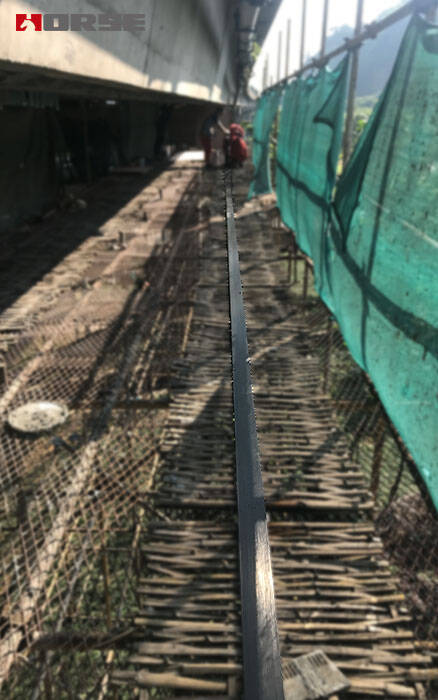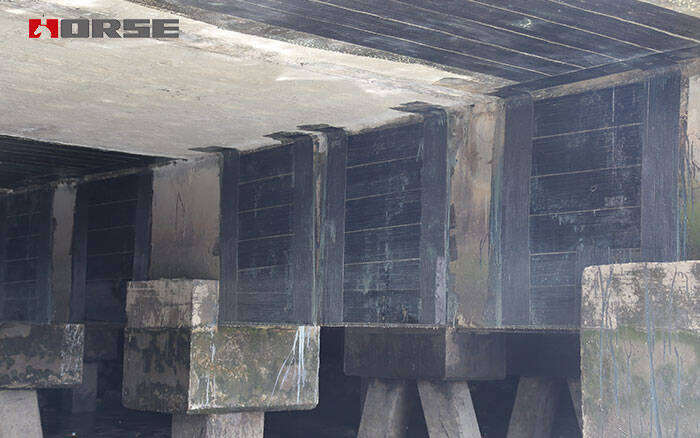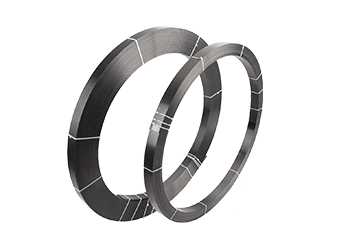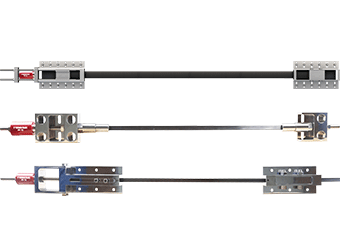Soluciones
La gama de negocios de construcción de caballos se extiende a todo el mundo y sirve a miles de clientes con productos, orientación técnica especializada en construcción, y somos testigos del reinicio de la marca china con ellos.
The bridge has already entered the reinforcing and repairing period. The application of FRP to reinforce the bridge can effectively improve the corrosion resistance and strength of the bridge.

1 Reliability theory
The main method of structural reliability research is the combination of first-order second-moment method and Monte Carlo numerical simulation method. This not only solves the problem of mathematical calculation in structural reliability analysis, but also does not need to consider the complexity of the limit state equation. The only disadvantage is the large amount of calculation engineering, but with the rapid development of computer technology, in the allowable accuracy can still meet the calculation requirements.
Let X= (X1, X2,... Xn) is a basic random variable of a structure and its probability density function is f (x). For the failure function of a component of a structure, the function function can be expressed as Z=g (X). According to the basic theory of reliability analysis, when Z0, the structure is in a state of greater resistance than load effect.
2. Characteristics of bridge strengthened by FRP
FRP is called fiber reinforced composite material, which is a new type of high-performance material which is composed of fiber material and matrix material in a certain proportion and conforms to a certain process. Its main characteristics are:
(1) the tensile strength of FRP bars is much higher than that of ordinary steel bars, and is close to that of high strength steel strands.
(2) the density of FRP bars is very small, which contributes to the design and construction of long-span structures.
(3) FRP has excellent corrosion resistance and can be used in acid, alkali, salt and humid environment for a long time.
(4) the fatigue resistance of FRP bars is also excellent, which is obviously higher than that of reinforcing bars.
(5) FRP bars have good elastic properties, and the stress-strain curves are close to linear elasticity. At present, many FRP products prove their life expectancy is more than 50 years by means of accelerated aging test.
3. Resistance attenuation model of general bridge structures
For existing bridge structures, we consider the strength degradation of concrete due to carbonation and the strength of reinforcement decay due to chemical reaction. When considering the law of random variable parameters changing with time, the resistance changes with time as concrete carbonation damage and chloride ion erosion of reinforcement. Generally speaking, the resistance of a structure is a non-stationary stochastic process, which needs to be stabilized for convenience of calculation, then the resistance R (t) can be expressed as:
R (t)=r(t)R0(t)
4. Reliability analysis of bridges strengthened with FRP
The resistance of existing bridges is mainly composed of two parts.
The first is the residual resistance before reinforcement.
The two is the increased resistance after maintenance and reinforcement.
Then assuming that there is no correlation between the post-reinforcement resistance and the pre-reinforcement resistance, the ultimate state equation after reinforcement is:
Z=Ra+ΔR-SG-SQ=0(12)
In the formula, Ra is the residual resistance, _R is the part of resistance increased after strengthening, SG is the dead load effect, SQ is the live load effect.
In order to calculate the increased resistance of the bridge structure strengthened by external fiber cloth, the strength, elastic modulus and strain parameters of the sheet should be calculated. We can use random variables to represent:
KP=Rs/Rj(13)
Among them, Rs is the actual value of resistance, which can be measured according to the experiment; Rj is the value of resistance stipulated in the code, and it is the actual value which takes into account the size effect and material parameter changes in calculation. It should be pointed out that the vehicle load on the bridge does not change with time.

5.Calculation example
A reinforced concrete bridge with 8 m span, 0.1M flange thickness, 1.5m flange width, 0.7m beam height, 0.2m rib width, 1 grade of design automobile load, 4 lanes, HRB335 steel bar strength and 0.45 automobile impact coefficient is selected for flexural reliability analysis. According to the survey, the specific parameters of the bridge are as follows:
(1) The resistance moment (R0) of the girder obeys the lognormal distribution, and its mean and standard deviation are respectively mu R0 = 2669.35 kN. m, _R0 = 363.57 kN. M.
(2) The midspan moment SG of the girder subjected to constant load G obeys normal distribution, and its mean and standard deviation are respectively mu SG = 763.49 kN m and_SG = 32.91 kN M.
In the process of reliability calculation, the bending limit state equation Z = R-SG-SQ. According to the expert evaluation, the degradation of the bridge belongs to the moderate degradation type, and the resistance attenuation coefficient is R (t) = 1-k1t + k2t2 = 1-0.005t.
According to the analysis of the calculation results, with the extension of service life, the failure probability of the structure is also increasing, its reliability will continue to decline, and the growth rate of the failure probability increases, which is consistent with the actual project.
By LU Hong Wu
Puede encontrar cualquier cosa que necesite, confíe en probar estos productos y encontrará la gran diferencia después de eso.

Tejido de fibra de carbono unidireccional de alta resistencia para refuerzo de compuesto de polímero reforzado con fibra (FRP).

Lámina de fibra de carbono pultruída para reforzamiento de estructuras

Placa / laminado / banda de polímero pretensado reforzado con fibra de carbono (CFRP) para la losa, refuerzo del haz